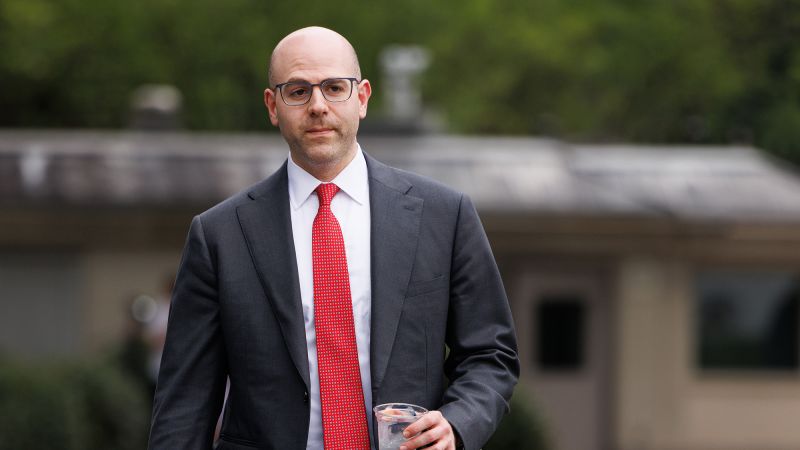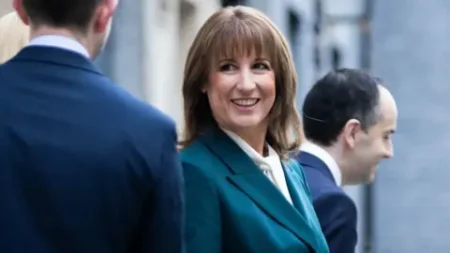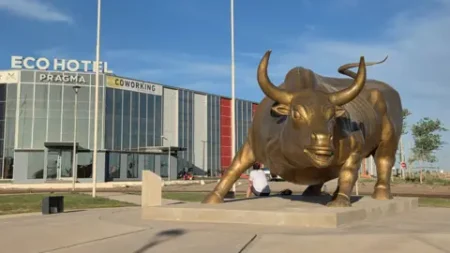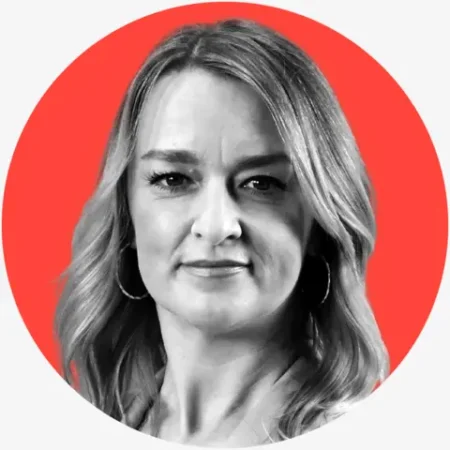In the ever-evolving landscape of U.S. economic policy, President Donald Trump recently took a significant step by nominating Stephen Miran, a seasoned economist from the White House, to occupy a vacant position on the Federal Reserve’s Board of Governors. However, this appointment appears to be merely a precursor to the more consequential choice that lies ahead: the nomination of a new Federal Reserve chairperson. This decision is anticipated to have profound implications on monetary policy and the overall economy. The current chair, Jerome Powell, has been a frequent target of Trump’s frustration, primarily due to Powell’s reluctance to accommodate the President’s repeated requests for lower interest rates. With Powell’s term set to expire in May, speculation surrounding his successor is intensifying.
During the past week, the dynamics of the selection process for the next Fed chair have taken various twists, revealing Trump’s strategic maneuvering as he connects with potential candidates. Notably, Trump has expressed regret over his decision to nominate Powell, which may have led to an expanded pool of candidates for the top position. Reports suggest that Trump’s administration is actively interviewing several individuals who could potentially steer the nation’s monetary policy in a new direction.
Among those previously considered for the role, Treasury Secretary Scott Bessent has been ruled out, while Christopher Waller, a current Fed governor, has emerged as a surprising contender. Alongside him are two other candidates, both named Kevin: former Fed governor Kevin Warsh and current White House economist Kevin Hassett. The possibility remains that if confirmed, Miran could impress the President, propelling him into the role of Fed chair as well.
Adding to this intriguing landscape, the Wall Street Journal revealed that Trump’s list of potential picks for the Fed chair now includes James Bullard, the former president of the St. Louis Fed. This expansion of options illustrates the complex nature of the decision-making process as Trump weighs the merits of various candidates, potentially leading to a choice that resonates with both his policies and the market’s expectations.
Economists closely monitoring the situation, such as Derek Tang from LH Meyer/Monetary Policy Analytics, suggest that while the two Kevins remain formidable candidates, Waller’s recent rise among Trump’s inner circle may position him as a frontrunner. Indeed, Waller, who was appointed to the Fed board by Trump in 2020, is recognized for his articulate messaging regarding the Fed’s policy direction, particularly during recent periods of aggressive rate hiking aimed at controlling inflation.
Waller’s dissenting stance on the Fed’s decision to maintain steady borrowing costs has further bolstered his candidacy. Unlike most members of the rate-setting committee, Waller advocated for a rate cut, a move that had not seen multiple dissenters since 1993. His statement underscored economic nuances, arguing that tariffs are temporary price increases and that it would be prudent for the Fed to step in to safeguard the labor market.
The rising visibility of Waller among the candidates appears to have been influenced by his recent dissent, which has not gone unnoticed during deliberations. Trump’s advisors have reportedly touted these dissenting opinions, significantly enhancing Waller’s prospects for leadership at the Fed. Concurrently, Warsh re-emerged as a candidate not only due to his prior associations with the Trump administration but also through his consistent support for Trump’s economic policies.
Notably, Warsh has been outspoken about his views on tariffs and inflation, claiming that the administration’s tariff strategies would not ultimately lead to significant inflationary pressures—a sentiment at odds with broader economic thinking. He carries a personal relationship with the Trump family through his marriage into a prominent family, which likely strengthens his position as a favored candidate.
Meanwhile, Hassett, a Ph.D. economist known for his loyalty to Trump, also factors into this equation. His advocacy for Trump’s tariffs and his long-standing advisory role have placed him in the running for the Fed chair position. Observers anticipate that Hassett, given his close ties to the President and the White House, might emerge as a likely nominee regardless of the shifting dynamics surrounding potential contenders.
In conclusion, Trump’s imminent decision regarding the next chairperson of the Federal Reserve is poised to have lasting ramifications for the nation’s economic policy. From Waller’s dissent to Miran’s potential promotion, each candidate brings a distinct set of values and experiences, reflecting the varying ideologies that may shape future monetary policy. With a carefully considered approach that balances personal relationships with economic strategy, Trump is navigating a critical juncture in his administration’s economic agenda.











